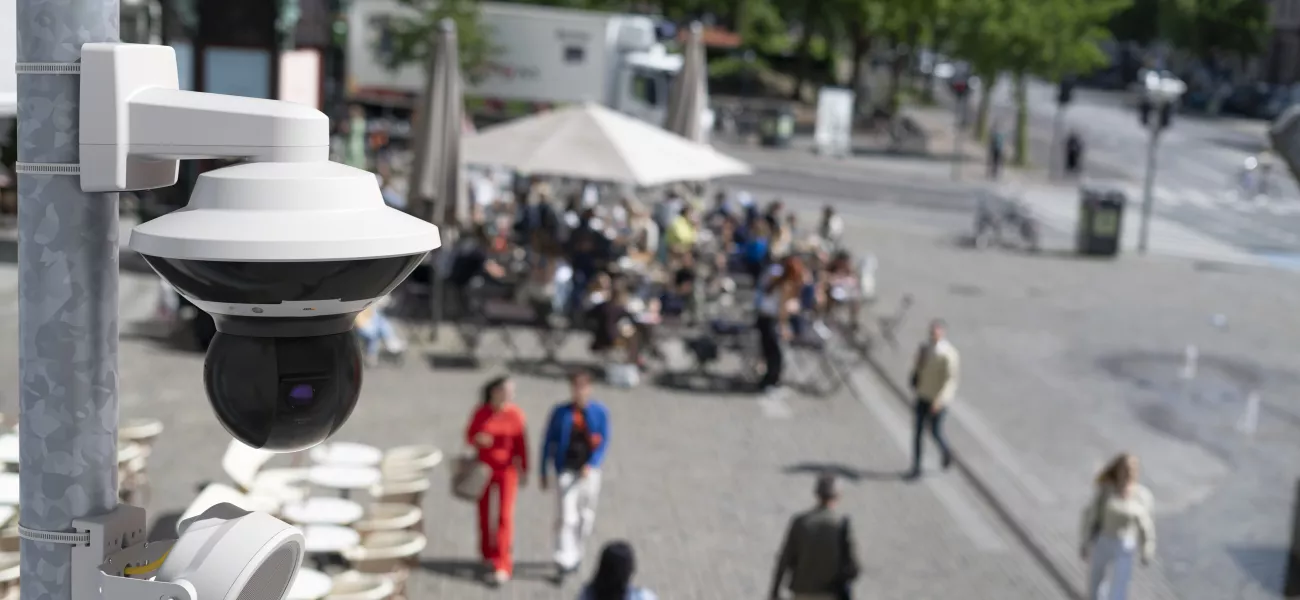
With half of the world’s population currently living in urban areas, public safety of residents has never been more important. However, crime rates in cities are increasing exponentially and network surveillance solutions may be the key to improving safety and security for residents.
Imagine living in a city where you could go for a walk at any time of day or night without fear. Or leave your door unlocked while you buy groceries, knowing that your vehicle would be there when you returned. Although this is the dream for many residents, the reality of city living tends to be quite different.
ThoughtLab’s recent report, ‘From Future Vision to Urban Reality’, sponsored by Axis Communications explored the different factors affecting cities and the most effective strategies that authorities are using to prepare for the future. This report revealed that one-third (35%) suffered from high crime.
However, forward-thinking city officials understand that high levels of criminal activity can have an impact that extends beyond safety and security, affecting factors such as property value and how residents use public transport. These cities take a proactive approach to monitoring, deterring and responding to criminal activity, using technology to stay one step ahead.
Our latest ebook, Surveillance technology for future-ready cities outlines example use cases and tangible next steps that authorities can take to improve the crime rates in their cities.
Let’s take a look at the areas where technology can have the most impact.
Centralizing operations to drive efficiencies
Although incidents of undesirable and criminal behavior can occur independently or as part of wider organized activity, law enforcement officials and emergency responders must act in a coordinated way to protect life and limit damage. Establishing real-time crime centers (RTCCs) – which gather data inputs from surveillance cameras, radar, audio equipment, and intelligent analytics – will help provide real-time situational awareness and insights. This will then improve efficiencies and emergency response by centralising data from a range of sources. As a result, you have all the information you need to coordinate responses, allocate resources, investigate efficiently, and execute your plan.
Intrusion and loitering detection
People with malicious intent often gather in quiet areas and loiter near high-value or sensitive locations which may provide them with an opportunity to strike. Preventing criminal activity often means denying or deterring access to certain areas, such as parking lots and parks after opening hours. You can utilize cameras equipped edge analytics to detect loitering or trespassing in designated areas, alerting security personnel and triggering deterrent activity if intervention is necessary.
Body-worn cameras for monitoring, deterrence and education
Sometimes having another perspective of an incident can make a critical difference to the outcome of a case. While network surveillance cameras provide a broader view, body-worn cameras put you in the center of the action and capture audio and video for evidence used by law enforcement and legal proceedings. They act as a supplement to other surveillance methods which feed into the RTTC, providing security officials with another source of data. These cameras are also effective before an incident occurs, as they act as deterrents and aid de-escalation efforts in potentially dangerous or violent situations.
On-board cameras for risk management and operational efficiency
It’s not only essential to monitor activity on the ground, but in vehicles such as buses, trains and trams as well. Onboard camera systems can help support law enforcement and first responders in a variety of ways, providing multi-camera, interior and exterior footage to security personnel – even while vehicles are in motion. This allows real-time patrols and integrations with other surveillance views to provide a single view of an incident and allow a quick, effective response.
Find out more
Preventing and deterring crime requires a multifactorial approach and the most future ready cities are already implementing solutions which support security staff and provide additional ‘eyes and ears’ to aid responses. In fact, 70% of future-ready cities have already invested in smart ground surveillance to help improve the safety and security of residents.
